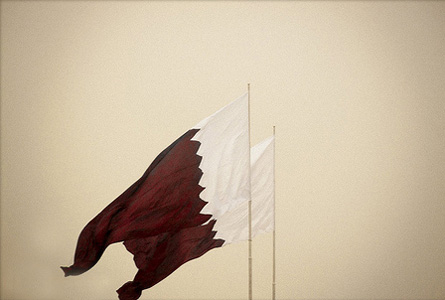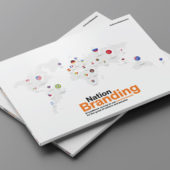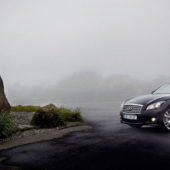In today’s increasingly global marketplace, where plethora of choice and successful mass production have resulted in thousands of advertising messages bombarding us every day, it is interesting to note the rise of the brand. As a measure of quality, consistency and trust in a company’s products and services, the brand has taken centre stage in every company striving to differentiate its services and position itself as the provider of choice.
Brands have become a cultural phenomenon now ,we wear them, drive them, eat them and dance to them, to the point where brands have now become a shorthand for expressing who we are and who we strive to be. We are a brand, expressing our individuality and our tastes with what we wear and how we behave, moving increasingly in tighter and tighter social circles of people who belong to our tribe, our brand.
Enlightened companies have realised long ago that in this marketplace, emotional persuasion is key. The battle for customers in tomorrow’s marketplace will be fought not over price but over hearts and minds in the territory of brands, which is why they have risen to the pinnacle of power and influence in commerce and culture.?So it is only natural that nations are looking at this cultural, social and commercial phenomenon as the Holy Grail for branding their country.
Finding a niche has become the basis for survival in a globally competitive marketplace, not just to attract tourism and inward investment, but also as a source of national pride for its citizens and a political leverage for governments to build bilateral relationships on an international level.
In principle, it is a country’s citizens who stand to gain the most from a successful nation branding campaign. Just as corporate branding campaigns can raise the morale, team spirit, and sense of purpose of a company’s employees, national branding campaigns can provide
a country with a common sense of purpose and national pride – not to mention a higher standard of living.On the face of it, therefore building a country brand should be similar to building a Coca Cola or a Nike. The answer is much more complex.
A new product comes into existence as a clean slate, to which a set of associations can later be mapped onto. Even after a product has been launched, companies are free to make changes, responding to consumer demand and feedback. Countries, however, may be more limited to change how people perceive their country. Obviously a country can’t replace its deserts with mountains, or grow bananas if its climate favours snow. Although it may be possible for a nation to attract more foreign direct investment or shift its economic base, there will always be some constraints over which it has little or no control.
Products are continually undergoing upgrades, new, improved formulas, face-lifts as well as product extensions dependent on tastes and fashions of the moment. Places do not have most of these choices. Their image problems may be founded in structural, political or socio-economic issues that can take years to fix, if at all.?Brands are created as a promise of quality and consistency and when the promise is met in the eyes of the buyer, it results in a favourable, or at least a balanced image where the buyer believes in the company and will be more open to accept other products from that company.
In the case of country branding, the product is the country, which includes the people, the government (including its institutions) and the business sector. For country branding to work one has to engage with and enrol these three major stakeholders and ensure that their efforts towards national image building are coordinated to deliver the desired positioning and differentiation. And this is where the challenge begins.
Marketing a country as a tourist hideaway where the pace of life is slow and the life simple may not suit the interests of those who are trying to promote the country’s budding industrial, IT or energy infrastructure to international investors. Or perhaps a country promoting its beaches and resorts as a tourist haven might not suit that country’s more traditional culture and morals.
In Qatar’s case, the first question to ask is does Qatar have a brand?, ?The answer while complex is both yes and no. There is no doubt that the many carriers of Qatar’s flag across the globe are all doing a sterling job in their own right to promote Qatar.
The government through its embassies worldwide and its trade missions overseas, Qatar Tourism Authority, whose job it is to promote Qatar tourism worldwide and Qatar Airways which has marketed itself more than any other institution, placing an emphasis on luxury, prestige and modernity combined with tradition. Al Jazeera was voted the 5th most influential brand in the world in 2004.
Qatar Foundation founded in 1995 by HH the Emir Sheikh Hamad bin Khalifa Al Thani, has gone a long way to promote progressive education, research and community welfare and its flagship Education City which hosts branch campuses of some of the world’s leading universities, as well as numerous other educational and research institutions is fulfilling it promise of delivering international standard education to the people of Qatar and beyond.
In commerce, there is RasGas, Qatar National Bank and Qatar Petroleum among others, paving the way for Qatari companies to take their rightful place in the International business arena. And finally, as it’s nearly upon us, the Doha Asian Games is doing its best to promote Qatar and link the values of sportsmanship, participation and fun, while creating a legacy for sporting events and the transfer of skills to its citizens for the benefit of Qatar.
But there is no doubt that there is no one single consistent message or coordinated Look and Feel, which is the first element of a successful brand. I asked several people in Qatar, whose job titles would indicate their understanding and awareness of branding and marketing whether they thought that Qatar had a brand and their answers were unanimous:
There are sub brands that are gaining international currency but they do not form a cohesive whole. More importantly there is no single strategy for promoting and defending the Qatar brand.No internationally people know very little about Qatar. Those who do, see it merely as a wealthy emirate as a result of its gas reserves.
The next question to ask is does Qatar need a country brand? To answer this, I reverted to two sources of information. The first was my interviews with marketers and communication specialists in Qatar and the answers here were again quite forthright:
Even though Qatar does have a clear vision of where it wants to be, it is quite shy about some of the details. Qatar has a positive and dynamic story to tell, and it could be telling it more coherently and diligently.Yes, look at the successful branding of Dubai. Qatar could create a successful country brand but it needs greater internal communication.My other source of information to answer this question was to research other countries that have undergone or are undertaking country branding and analyse the benefits of undertaking such an exercise.
According to Simon Anholt, author of Brand America: The Mother of All Brands, a select group of countries have national images so powerful and so positive that they amount to megabrands. Other countries have successfully turned around, or repositioned, their national brand in recent years. Still others are actively working to polish their brand identity.
Megabrands
Countries effortlessly synonymous with a number of valuable attributes:
- FRANCE: chic and quality of living?
- ITALY: style and sexiness?
- GERMANY: quality engineering?
- SWITZERLAND: purity, wealth, integrity?
- JAPAN: technology, entertainment, design
Turnaround Brands
- SPAIN: Once thought of as a European backwater, Spain capitalised on the 1992 Barcelona Olympics to successfully re-brand itself as a hip Mediterranean playground (think of the Joan Miro sun symbol). The resulting rise in inward investment, property development and tourism has lifted Spain to an economic powerhouse within Europe.
- IRELAND and SOUTH AFRICA re-branded themselves as countries on the move, based on their economic and political turnarounds, respectively. And the resulting increase in GDP, especially noticeable in Ireland, coupled with the rise in inward investment and standard of living has lifted Ireland to the top levels of healthy economies in the European Community.
Brands to Watch - BRITAIN, having already positioned London as a cosmopolitan, investment-savvy style capital, it now wants to extend the image to the rest of the country (Cool Britannia), coordinating efforts across government agencies.
- SLOVENIA’s brand strategy has focused on transforming its image from that of a post-communist state to the new crossroads of Europe, building highways, lowering trade barriers, promoting foreign investment, and selling itself as an alternative tourist destination for those tired of Italy and France.
- NEW ZEALAND: On the back of the successful worldwide smash hit Lord of the Rings trilogy, New Zealand launched a successful tourist campaign which has made the country the in place to visit and immigration and inward investment has soared as a result.
The Spontaneous Brand
According to Wally Olins, one of the foremost branding gurus of my generation, some nations develop a national brand in a kind of controlled or formalised way, but with others it happens almost spontaneously.
If you look at what is happening in India today, and the perceptions around India, none of these are controlled. India has emerged in the last five years in terms of perceptions in a quite different way from the way it was perceived ten or fifteen years ago.
It was spirituality and poverty, and now it’s software; it’s highly educated people. And in some countries, Indian clothing ? textiles and fabrics, are fashionable…. None of this is managed. It’s all spontaneous.
However India has recently launched a very powerful and dramatic tourist promotion, which really encapsulates the essence, spirit and beauty of Incredible India. Surely a sign of its increasing sophistication and power.
Doing it Right
There is no doubt therefore that a coordinated, holistic process to create and develop a brand story to deliver a unique positioning and differentiation for Qatar which is meaningful, believable and true, supported by a rich visual language delivered across all communication channels in an integrated manner would be highly beneficial and reinforce a sense of identity, unity and purpose. To achieve the aim of creating a positive Qatari Brand there must be a brand champion at the highest level of government to take up the mantle of responsibility and cajole, coordinate, persuade and order all the relevant stakeholders to work together. It is imperative that the public are represented at every stage of the dialogue in order to achieve buy-in and enrolment in the vision and delivery of Brand Qatar.
It is advisable therefore to find a dynamic and creative agency with an understanding of the distinct culture and traditions of Qatar to create the process of concept creation, coordination between stakeholders, delivery and monitoring of the brand building both nationally and internationally.
In terms of process, this is a long-term project, which would take no less than a year to research and develop followed by another year of brand delivery and monitoring. ?The mission is to communicate the BIG IDEA, the soul of the brand, the essence of Brand Qatar in its simplest and most powerful glory as part of a coordinated marketing campaign to help the government achieve its diplomatic objectives, the country to increase trade, investment and promote tourism and the people to feel even more proud of their country in the knowledge that they know who they are and what they stand for.
Because, if you know what you love, you’ll love what you know.
Article by Anthony Ryman. Anthony Ryman is Managing Director of Grow, a Doha-based creative advertising and design agency focused on brands.




